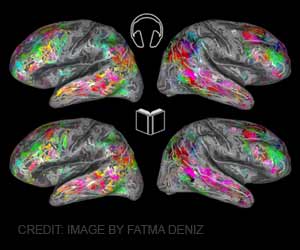The lesson in this particular study is that no single technique gives us all the right answers. Science is never as simple as we like to make it seem.

Using a technique dubbed 'brainbow', the research team tagged the terminals with proteins that fluoresce different colors. The scientists thought one color, representing the single source of the many terminals, would dominate in the clusters. Instead, several different colors appeared together, intertwined but distinct. The samples showed a true 'brainbow'.
Aboozar Monavarfeshani, graduate student in Fox's laboratory who tagged the terminals, said, "I could see, right in front of me, something very different than the concept I learned from my textbooks."
The findings showed individual terminals from more than one retinal ganglion cell in a mature mouse brain. This study is a direct contradiction to some other research indicating that neural development weeds out most connections between retinal ganglion axons and target cells in the brain.
Fox said, "The lesson in this particular study is that no single technique gives us all the right answers. Science is never as simple as we like to make it seem."
The results are published in Cell Reports.
Advertisement













